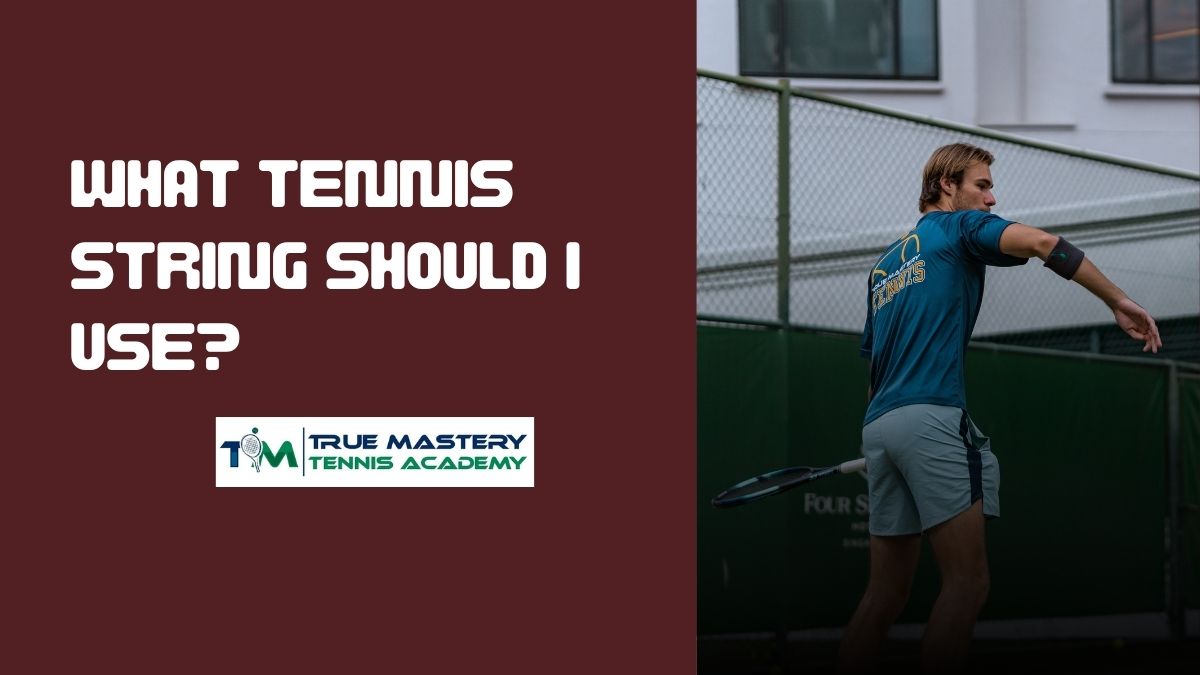What Tennis String Should I Use?
If you have ever stood at the counter of a sports store, staring at an overwhelming wall of tennis strings, you know the confusion is real. Polyester, multifilament, natural gut, hybrids—it feels like you need a PhD just to string your racket. But choosing the right string doesn’t have to feel like solving a Rubik’s Cube. By breaking down your playing style, understanding string types, and factoring in your goals on court, you’ll find clarity. Let’s unravel the string mystery together so you can finally answer the age-old question: what tennis string should I use?
Understanding Why Tennis Strings Matter
Your racket may be the hero, but the strings are the unsung warriors. They dictate the feel of every shot, whether you’re going for a sharp slice, a heavy topspin forehand, or a smooth drop shot. Strings influence control, comfort, spin, and even how long your arm survives the season without crying out in pain. Think of them as the tires on your car—no matter how powerful the engine, without the right grip, you won’t go far.
What Tennis String Should I Use for Power?
If your natural strokes aren’t producing enough depth or speed, strings can be your best friend. Multifilament strings, often made of nylon fibers, mimic the feel of natural gut while providing extra power. They’re forgiving, easy on the arm, and allow you to hit with added depth without needing to muscle every shot. For beginners and intermediate players, this can be a game changer.

A case study from the Singapore Sports Institute highlighted that players using softer strings like multifilament showed a 15% reduction in forearm strain while maintaining shot depth, proving that power doesn’t have to come at the expense of comfort (SportSG).
What Tennis String Should I Use for Control?
On the flip side, advanced players often want tighter reins on their racket. Enter polyester strings. They’re firm, durable, and give you laser-sharp control over where the ball goes. These are perfect if you hit with aggressive topspin, as the strings snap back into place to grip the ball. The trade-off is they’re tougher on the arm and may feel stiff if you’re just starting out.
For those who want a middle ground, hybrid setups—polyester mains with softer crosses—provide a balance of control and playability. It’s like having your cake and eating it too.
What Tennis String Should I Use for Comfort and Injury Prevention?
If you’ve ever felt the dreaded tennis elbow creeping in, strings could be to blame. Natural gut, although the most expensive option, remains the gold standard for comfort. Its elasticity and shock absorption help reduce vibrations, making it ideal for players managing injuries or wanting to prevent them. Multifilament also plays a strong role in protecting your joints.
In fact, a physiotherapy study in Singapore found that players switching from full polyester to natural gut reduced elbow pain severity scores by 30% after eight weeks of play (Nanyang Polytechnic).
What Tennis String Should I Use for Durability?
String breakers know the pain of restringing every other week. Polyester strings are the answer here—they’re built like armor, designed to last longer against heavy hitters. While softer strings may fray quickly, polyester resists wear and tear, making it the practical choice if you hit with pace and spin regularly.
The Tension Factor: The Unsung Variable
Beyond material, tension plays a massive role. Lower tensions (closer to 50 lbs) provide more power and a trampoline effect, while higher tensions (closer to 60 lbs) give more control and precision. Beginners often benefit from looser setups for forgiveness, while advanced players may prefer the tighter response.
At True Master Tennis Academy, players are guided not just on string selection but also on ideal tension settings tailored to their game. Coaches often recommend that players test small tension adjustments—just two pounds difference can feel like night and day on the court.
What Tennis String Should I Use as a Beginner?
For newcomers, comfort and playability should be the top priorities. Multifilament or even synthetic gut strings are excellent starting points. They provide a softer feel, help build confidence, and reduce the risk of injury as your muscles adapt to the sport.
What Tennis String Should I Use as an Advanced Player?
If you’re competing, chasing consistency, and ripping heavy topspin forehands, polyester is often your go-to. You’ll sacrifice some comfort, but the durability and precision make it worthwhile. Hybrid setups also shine here, giving a taste of both worlds.
Bringing It Together: Matching Strings to Style
Your string should be a partner, not a stranger. Are you a baseliner who grinds from the backcourt? Polyester. Do you rely on touch, finesse, and comfort? Natural gut or multifilament. Are you somewhere in between? Hybrids will feel like home.
Why Expert Guidance Matters
String choice is deeply personal, and experimenting is part of the journey. However, having a knowledgeable coach guide you ensures you’re not burning through time and money. At True Master Tennis Academy, expert coaches tailor recommendations not only based on your game but also your growth trajectory, so you’re not just choosing strings for today—you’re choosing for where you want your game to be tomorrow.
Conclusion: Finding Your String Identity
So, what tennis string should I use? The answer depends on your goals, playing style, and comfort needs. Strings are not just accessories; they’re the lifeline between your racket and the ball. Choosing the right one can unlock new levels of control, spin, or power that you didn’t know you had.
If you’re ready to elevate your game, consider working with coaches who understand not just technique but also equipment. Your journey starts with one smart choice—getting both your game and your gear aligned.
Start your journey today with the professionals at True Master Tennis Academy and explore tailored tennis lessons that cover everything from technique to equipment selection.
Click on the link to find out more about TM Tennis Academy’s lesson package. Chat with our head coach today!
About TM Tennis Academy
Private Tennis Lessons
Kids Tennis Lesson
Group Tennis Lessons
Whatsapp Us





1 thought on “What Tennis String Should I Use?”
Pingback: What Swimming Stroke Is Best For Scoliosis | HydroSplash